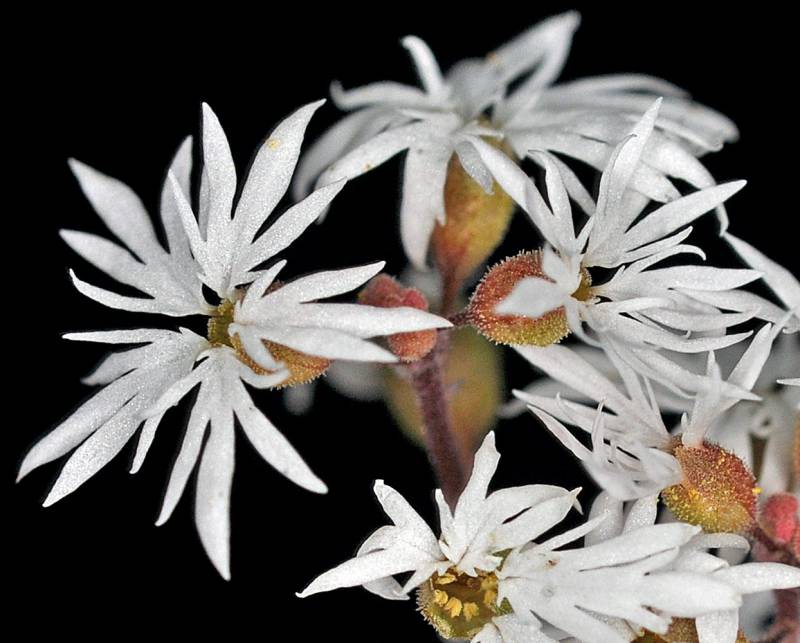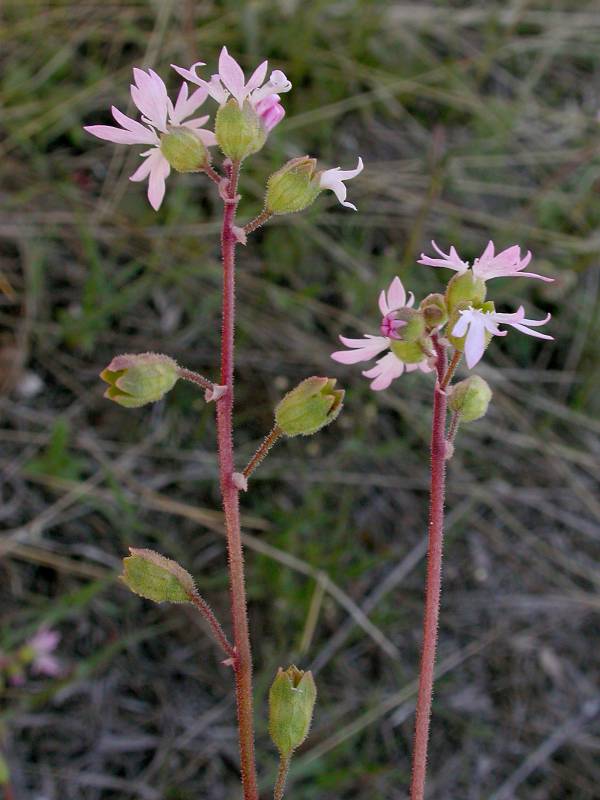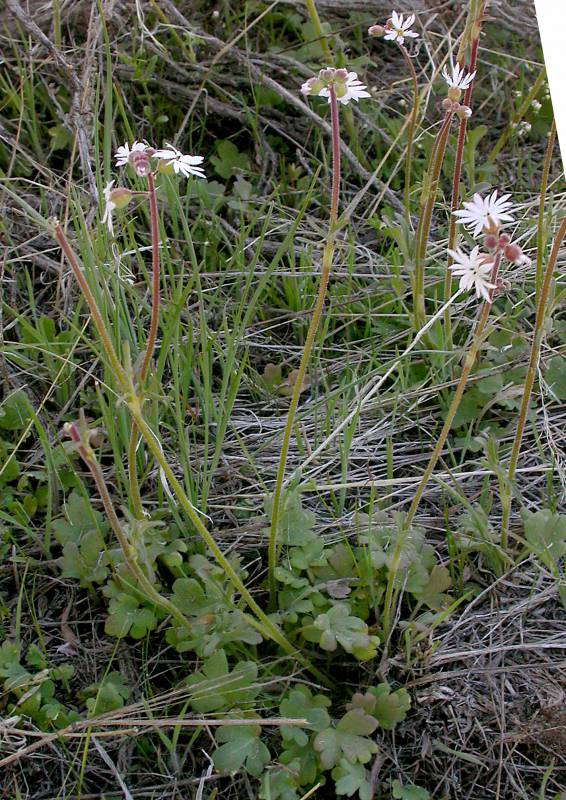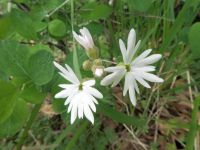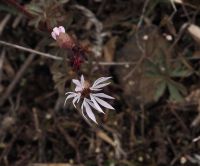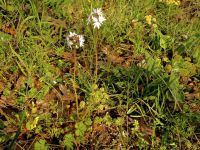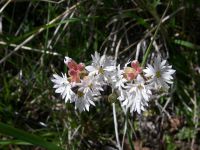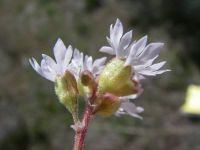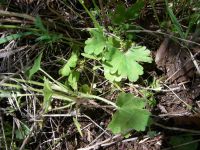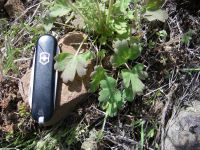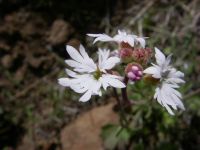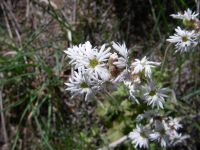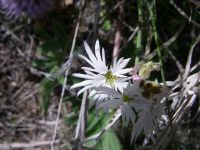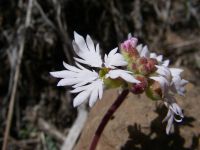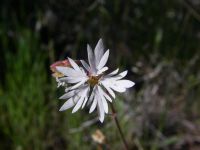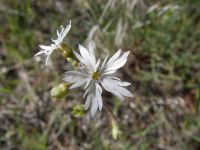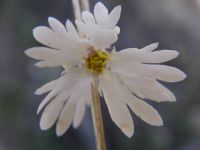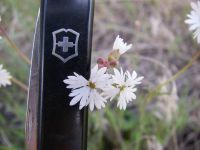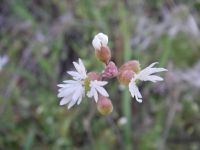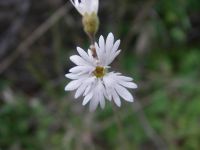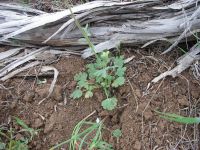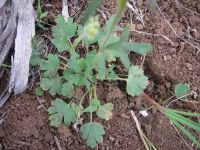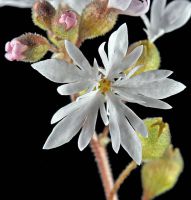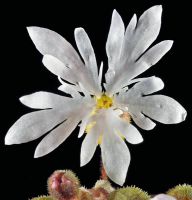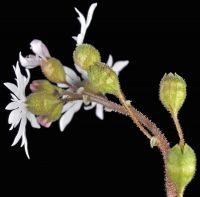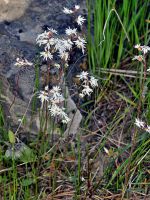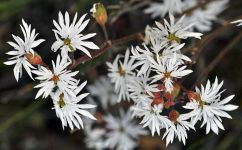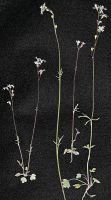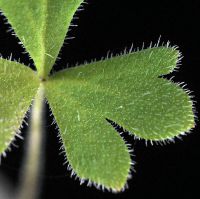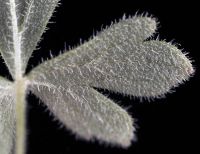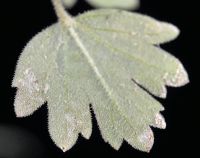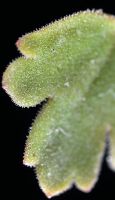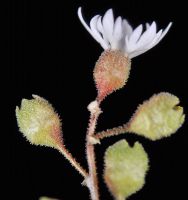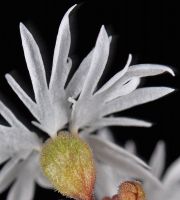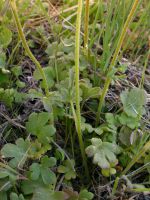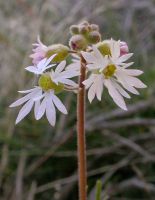Distribution: Occurring east of the Cascades crest in Washington; British Columbia to California, east to the Rocky Mountains.
Habitat: Sagebrush desert and ponderosa pine forests openings.
Flowers: April-June
Origin: Native
Growth Duration: Perennial
Conservation Status: Not of concern
Pollination: Apomixis, bumblebees, bees, flies
Glandular-pubescent perennial from slender rhizomes bearing numerous rice-grain bulblets, the stems 10-25 cm. tall, the hairs yellow-tipped.
Leaves mostly basal with petioles longer than the blades; the leaf blades reniform to sub-orbicular, 5-15 mm. wide, with short, stiff hairs on both surfaces, from ternately divided to 3-lobed half their length and with shallowly toothed lobes, to merely coarsely 3- to 7-toothed; cauline leaves 2-3, sessile, cut into linear segments.
Inflorescence a congested raceme at first, becoming elongate, 5-10 flowered; calyx 2-3 mm. long, narrowly cup-shaped, the 5 lobes broadly triangular, less than 1 mm. long; petals 5, white, the claw very short, the blade 3-5 mm. long, with 3 large lobes and 2 much smaller basal lobes.
Ovary less than half inferior; carpels 3, about 5 mm. long.
Publication: Fl. N. Amer. 1: 584. 1840.
Lithophragma brevilobum Rydb.
Lithophragma rupicola Greene
Lithophragma tenella Nutt., orthographic variant [HC]
Lithophragma tenella Nutt. var. tenella, orthographic variant [HC]
Lithophragma tenella Nutt. var. thompsonii (Hoover) Hitchc. [HC]
Lithophragma tenellum Nutt. var. thompsonii (Hoover) C.L. Hitchc.
Lithophragma thompsonii Hoover
Tellima tenella (Nutt.) Steud.
PNW Herbaria: Specimen records of Lithophragma tenellum in the Consortium of Pacific Northwest Herbaria database
WA Flora Checklist: Lithophragma tenellum checklist entry
OregonFlora: Lithophragma tenellum information
E-Flora BC: Lithophragma tenellum atlas page
CalPhotos: Lithophragma tenellum photos

